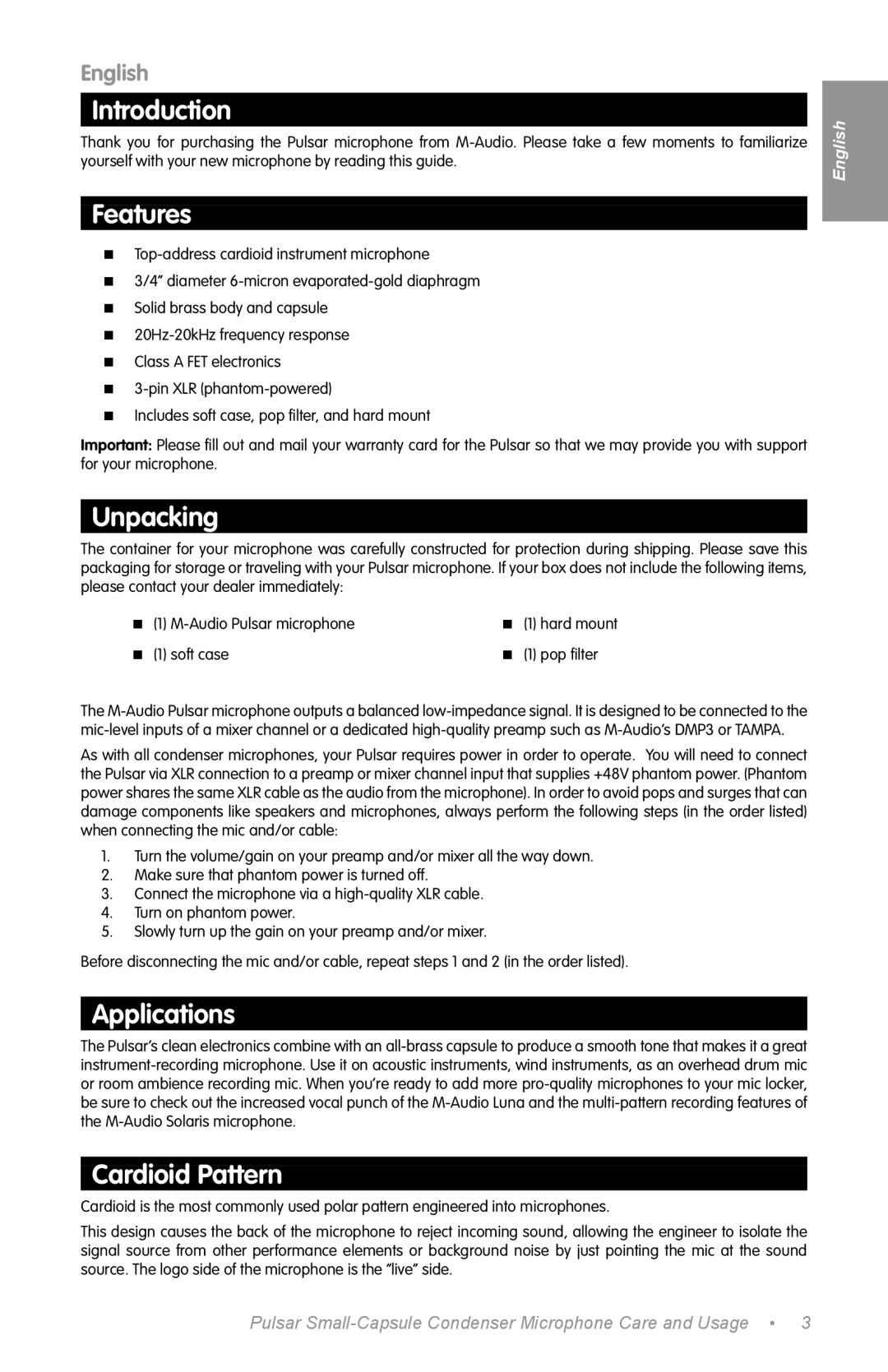
English
Introduction
Thank you for purchasing the Pulsar microphone from
Features
<
<3/4” diameter
<Solid brass body and capsule
<
<Class A FET electronics
<
<Includes soft case, pop filter, and hard mount
Important: Please fill out and mail your warranty card for the Pulsar so that we may provide you with support for your microphone.
Unpacking
The container for your microphone was carefully constructed for protection during shipping. Please save this packaging for storage or traveling with your Pulsar microphone. If your box does not include the following items, please contact your dealer immediately:
< | (1) | < | (1) hard mount |
< | (1) soft case | < | (1) pop filter |
As with all condenser microphones, your Pulsar requires power in order to operate. You will need to connect the Pulsar via XLR connection to a preamp or mixer channel input that supplies +48V phantom power. (Phantom power shares the same XLR cable as the audio from the microphone). In order to avoid pops and surges that can damage components like speakers and microphones, always perform the following steps (in the order listed) when connecting the mic and/or cable:
1.Turn the volume/gain on your preamp and/or mixer all the way down.
2.Make sure that phantom power is turned off.
3.Connect the microphone via a
4.Turn on phantom power.
5.Slowly turn up the gain on your preamp and/or mixer.
Before disconnecting the mic and/or cable, repeat steps 1 and 2 (in the order listed).
Applications
The Pulsar’s clean electronics combine with an
Cardioid Pattern
Cardioid is the most commonly used polar pattern engineered into microphones.
This design causes the back of the microphone to reject incoming sound, allowing the engineer to isolate the signal source from other performance elements or background noise by just pointing the mic at the sound source. The logo side of the microphone is the “live” side.
English
Pulsar
